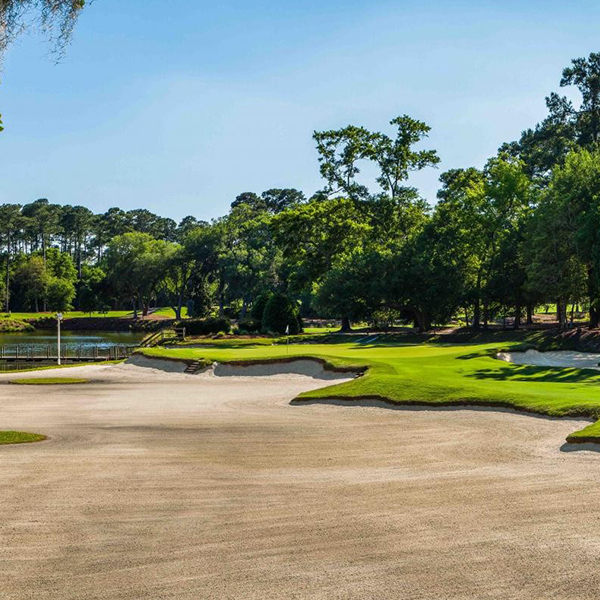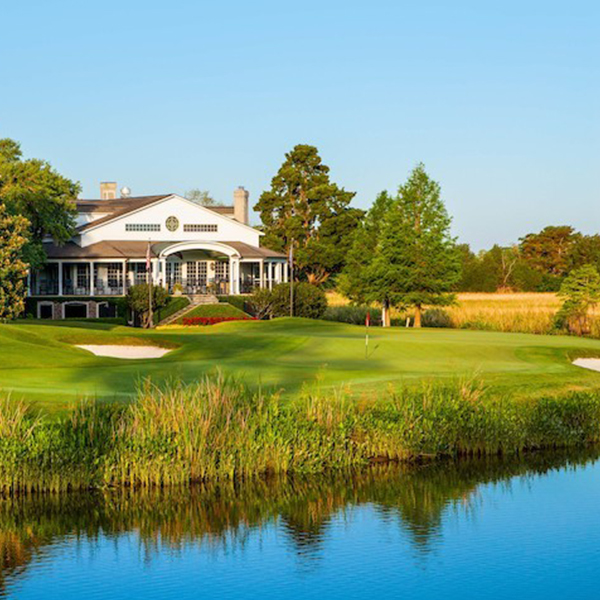About Caledonia Golf & Fish Club
Since opening to the public in January 1994, Caledonia Golf and Fish Club has rapidly gained a reputation as one of the premier courses in America. It is the first solo design of late, great golf course architect Mike Strantz. Strantz approached his assignments in a unique way—as an artist, rather than an engineer. His exceptionally creative eye is reflected in the way he sculpted Caledonia’s 18 holes, with large, creative greens guarded at times by ponds, streams and imposing bunkers. The same sort of majestic live oak that overhang the entryway into Caledonia similarly frames many of the shots at Caledonia, giving the course a rustic feel. Thousands of annual and semiannual flowers bloom every year throughout the property, further adding to the beauty of the experience. A round of golf at Caledonia has been described as a “beautiful day in a floral nature park.”




Caledonia History
Caledonia Golf & Fish Club’s site can be traced back to Dr. Robert Nesbit, a Scotsman who bestowed upon it the name the Romans gave his homeland: “Caledonia.” It is not known whether Dr. Nesbit acquired the property through his marriage in 1797 to Elizabeth Pawley or by purchase. The Pawley family owned a significant amount of property in the area and their name survives today- the surrounding area is now the town of Pawleys Island, South Carolina. Land records from Georgetown County indicate that Caledonia was, at one time, one of the largest rice plantations in the area with property stretching from the Atlantic Ocean to the rice fields on the western edge of the Waccamaw River. Perhaps the most striking aesthetic feature of the property is the impressive avenue of live oaks leading to the clubhouse steps. These 200-year old trees, laden with Spanish moss, led to old King’s Highway as it made its way along the coast in the 1700s. Agricultural records indicate that, at its peak in the mid-1800s, Caledonia’s annual production of rice was more than 700,000 pounds.
The original plantation house burned to the ground in 1931. Dr. Nesbit’s descendants continued to own and operate Caledonia until 1940. After the Nesbits relinquished ownership of the property, parcels were systematically sold off for development to the point where the once-substantial landholding was whittled to 152 acres from its original size of 2,542 acres. The current owners purchased the property in 1971 to use primarily as a hunting and fishing preserve. Each member had his own small lodge on the property and would often come to fish in the river and hunt ducks in the rice fields. Every Thursday the group would meet at Caledonia to cook dinner and socialize. They still gather there often—the shed remains on the property in its original form, with some cosmetic upgrades over the years. It is this fellowship and tradition that inspired the design and construction of the golf course.
As sportsmen, the owners aimed to build a course that preserved as much of the land’s natural beauty as possible. As southerners, they wanted to create an atmosphere of warmth and hospitality that visitors from around the country and the world would remember fondly. The goal of Caledonia Golf & Fish Club remains that each guest look back on his or her day not just as a round of golf, but as an overall Lowcountry experience.
